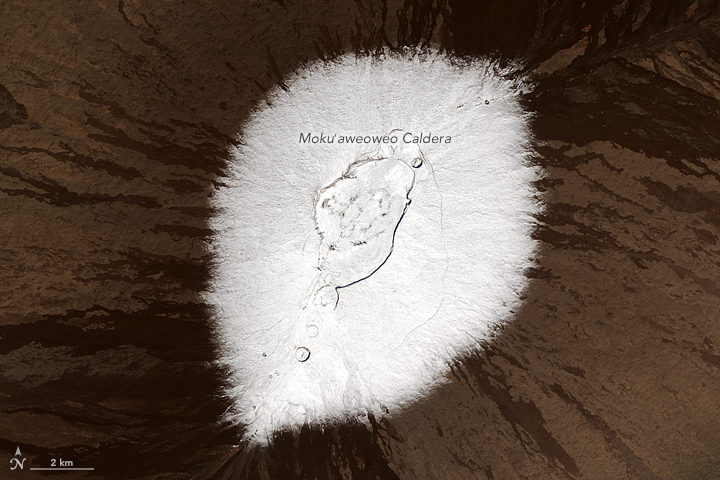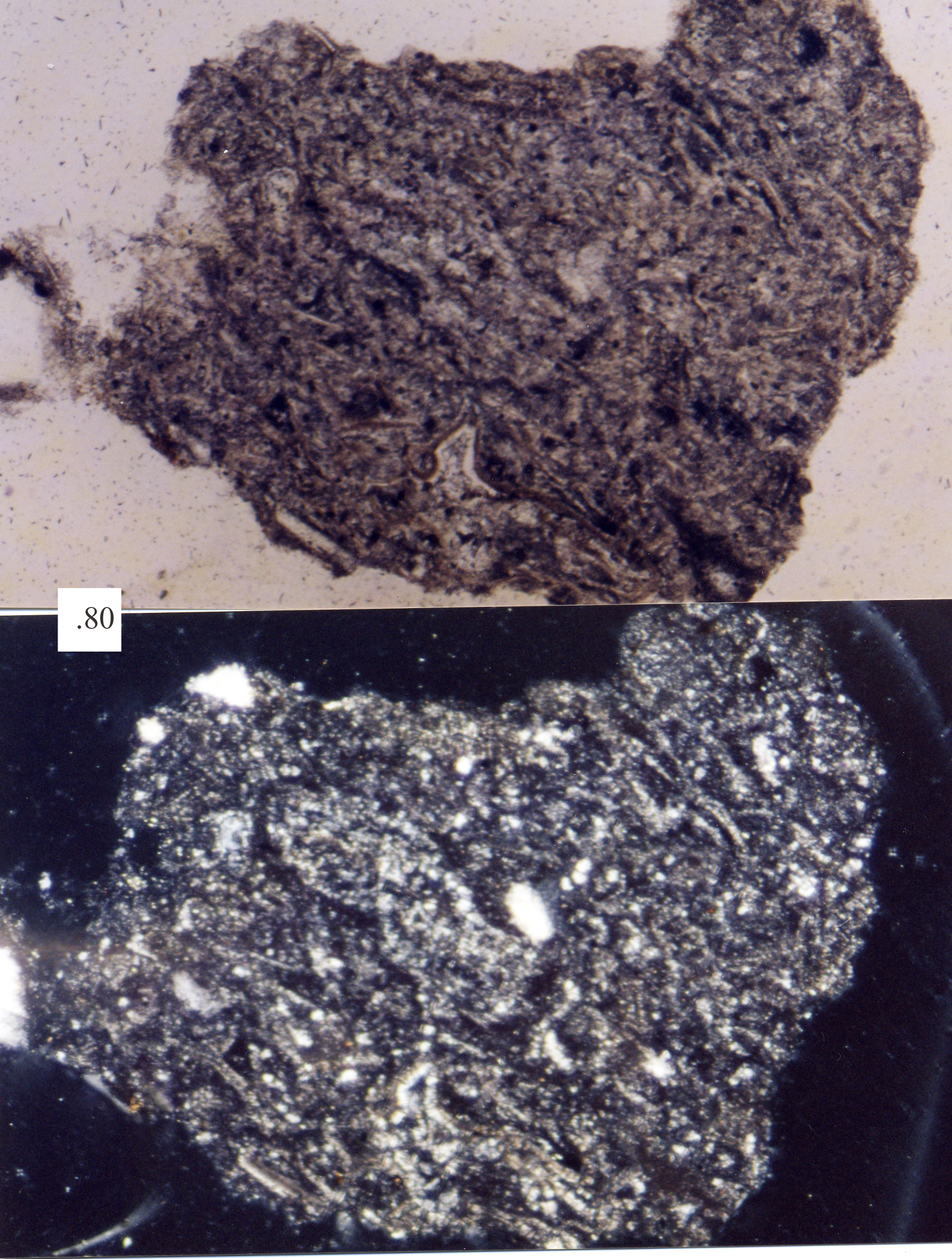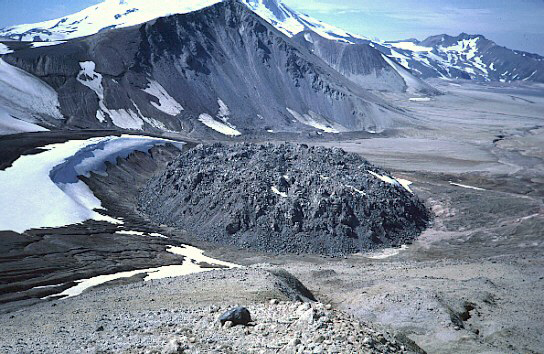|
Shield Volcano
A shield volcano is a type of volcano named for its low profile, resembling a shield lying on the ground. It is formed by the eruption of highly fluid (low viscosity) lava, which travels farther and forms thinner flows than the more viscous lava erupted from a stratovolcano. Repeated eruptions result in the steady accumulation of broad sheets of lava, building up the shield volcano's distinctive form. Shield volcanoes are found wherever fluid, low-silica lava reaches the surface of a rocky planet. However, they are most characteristic of ocean Volcanic island, island volcanism associated with Hotspot (geology), hot spots or with Rift, continental rift volcanism. They include the largest active volcanoes on Earth, such as Mauna Loa. Giant shield volcanoes are found on other planets of the Solar System, including Olympus Mons on Mars and Sapas Mons on Venus. Etymology The term 'shield volcano' is taken from the German term ''Schildvulkan'', coined by the Austrian geologist Eduar ... [...More Info...] [...Related Items...] OR: [Wikipedia] [Google] [Baidu] |
Mauna Loa Volcano
Mauna Loa (, ; ) is one of five volcanoes that form the Island of Hawaii in the U.S. state of Hawaii in the Pacific Ocean. Mauna Loa is Earth's largest active volcano by both mass and volume. It was historically considered to be the largest volcano on Earth until the submarine mountain Tamu Massif was discovered to be larger. Mauna Loa is a shield volcano with relatively gentle slopes, and a volume estimated at , although its peak is about lower than that of its neighbor, Mauna Kea. Lava eruptions from Mauna Loa are silica-poor and very fluid, and tend to be non-explosive. Mauna Loa has likely been erupting for at least 700,000 years, and may have emerged above sea level about 400,000 years ago. Some dated rocks are 470,000 years old. The volcano's magma comes from the Hawaii hotspot, which has been responsible for the creation of the Hawaiian Island chain over tens of millions of years. The slow drift of the Pacific Plate will eventually carry Mauna Lo ... [...More Info...] [...Related Items...] OR: [Wikipedia] [Google] [Baidu] |
Eduard Suess
Eduard Suess (; 20 August 1831 – 26 April 1914) was an Austrian geologist and an expert on the geography of the Alps. He is responsible for hypothesising two major former geographical features, the supercontinent Gondwana (proposed in 1861) and the Tethys Ocean. Biography Eduard Suess was born on 20 August 1831 in London, England, the oldest son of Adolph Heinrich Suess, a Lutheran Saxon merchant, and mother Eleonore Friederike Zdekauer. Adolph Heinrich Suess was born on 11 March 1797 in Saxony and died on 24 May 1862 in Vienna; Eleonore Friederike Zdekauer was born in Prague, now part of the Czech Republic, which once belonged to the Holy Roman Empire and the Austrian Empire. When Eduard Suess was an infant, his family relocated to Prague, and then to Vienna when he was 14. He became interested in geology at a young age. At the age of 19, while working as an assistant at the Hofmuseum in Vienna, he published his first paper—on the geology of Carlsbad (now Karlovy Vary ... [...More Info...] [...Related Items...] OR: [Wikipedia] [Google] [Baidu] |
Billy Mitchell (volcano)
Billy Mitchell is a pyroclastic shield, an uncommon type of volcano in the central part of the island of Bougainville, just north-east of the Bagana Volcano in Papua New Guinea. It is a small pyroclastic shield truncated by a 2 km wide caldera filled by a crater lake. It is generally thought to be named after Billy Mitchell, a 20th-century United States Army general who is sometimes regarded as the father of the United States Air Force, although the exact origin of this claim is not known. Background The last two major eruptions were in 1580 AD ± 20 years and about 1030 AD. They were among the largest Holocene eruptions in Papua New Guinea. Both were explosive eruptions with a Volcanic Explosivity Index of at least 5. The 1580 AD ± 20 years eruption produced pyroclastic flows and probably formed its caldera. The second of these eruptions likely had an effect on worldwide temperature, lowering it by 0.2-0.3 degrees celsius for a year or two after the event. The ignimbrite ... [...More Info...] [...Related Items...] OR: [Wikipedia] [Google] [Baidu] |
Felsic
In geology, felsic is a grammatical modifier, modifier describing igneous rocks that are relatively rich in elements that form feldspar and quartz.Marshak, Stephen, 2009, ''Essentials of Geology,'' W. W. Norton & Company, 3rd ed. It is contrasted with mafic rocks, which are richer in magnesium and iron. Felsic refers to silicate minerals, magma, and rock (geology), rocks which are enriched in the lighter elements such as silicon, oxygen, aluminium, sodium, and potassium. Molten felsic magma and lava is more viscosity, viscous than molten mafic magma and lava. Felsic magmas and lavas have lower temperatures of melting and solidification than mafic magmas and lavas. Felsic rocks are usually light in color and have specific gravity, specific gravities less than 3. The most common felsic rock is granite. Common felsic minerals include quartz, muscovite, orthoclase, and the sodium-rich plagioclase feldspars (albite-rich). Terminology Acid rock In modern usage, the term ''acid rock ... [...More Info...] [...Related Items...] OR: [Wikipedia] [Google] [Baidu] |
Pyroclastic Shield
In volcanology, a pyroclastic shield or ignimbrite shield is an uncommon type of shield volcano. Unlike most shield volcanoes, pyroclastic shields are formed mostly of pyroclastic and highly explosive eruptions rather than relatively fluid basaltic lava issuing from vents or fissures on the surface of the volcano. They typically display low-angle flank slopes and often have a central caldera caused by large eruptions. Lava is commonly extruded after explosive activity has ended. The paucity of associated Plinian fall deposits indicates that pyroclastic shields are characterized by low Plinian columns. Pyroclastic shields are commonly known to form in the Central Andes of South America, as well as in Melanesia (the island of Bougainville alone has two). There are also pyroclastic shields in Africa, such as Emi Koussi in Chad. Examples * Ambrym, Vanuatu * Apoyeque, Nicaragua * Masaya, Nicaragua * Billy Mitchell, Bougainville, Papua New Guinea * Emi Koussi, Chad * Laguna C ... [...More Info...] [...Related Items...] OR: [Wikipedia] [Google] [Baidu] |
Basaltic
Basalt (; ) is an aphanitic (fine-grained) extrusive igneous rock formed from the rapid cooling of low-viscosity lava rich in magnesium and iron ( mafic lava) exposed at or very near the surface of a rocky planet or moon. More than 90% of all volcanic rock on Earth is basalt. Rapid-cooling, fine-grained basalt is chemically equivalent to slow-cooling, coarse-grained gabbro. The eruption of basalt lava is observed by geologists at about 20 volcanoes per year. Basalt is also an important rock type on other planetary bodies in the Solar System. For example, the bulk of the plains of Venus, which cover ~80% of the surface, are basaltic; the lunar maria are plains of flood-basaltic lava flows; and basalt is a common rock on the surface of Mars. Molten basalt lava has a low viscosity due to its relatively low silica content (between 45% and 52%), resulting in rapidly moving lava flows that can spread over great areas before cooling and solidifying. Flood basalts are thick s ... [...More Info...] [...Related Items...] OR: [Wikipedia] [Google] [Baidu] |
Effusive Eruption
An effusive eruption is a type of volcanic eruption in which lava steadily flows out of a volcano onto the ground. Overview There are two major groupings of eruptions: effusive and explosive. Effusive eruption differs from explosive eruption, wherein magma is violently fragmented and rapidly expelled from a volcano. Effusive eruptions are most common in basaltic magmas, but they also occur in intermediate and felsic magmas. These eruptions form lava flows and lava domes, each of which vary in shape, length, and width. Deep in the crust, gasses are dissolved into the magma because of high pressures, but upon ascent and eruption, pressure drops rapidly, and these gasses begin to exsolve out of the melt. A volcanic eruption is effusive when the erupting magma is volatile poor (water, carbon dioxide, sulfur dioxide, hydrogen chloride, and hydrogen fluoride), which suppresses fragmentation, creating an oozing magma which spills out of the volcanic vent and out into the surroun ... [...More Info...] [...Related Items...] OR: [Wikipedia] [Google] [Baidu] |
Tephra
Tephra is fragmental material produced by a Volcano, volcanic eruption regardless of composition, fragment size, or emplacement mechanism. Volcanologists also refer to airborne fragments as pyroclasts. Once clasts have fallen to the ground, they remain as tephra unless hot enough to fuse into pyroclastic rock or tuff. When a volcano explodes, it releases a variety of tephra including ash, cinders, and blocks. These layers settle on the land and, over time, sedimentation occurs incorporating these tephra layers into the geologic record. Tephrochronology is a geochronological technique that uses discrete layers of tephra—volcanic ash from a single eruption—to create a chronological framework in which Paleoecology, paleoenvironmental or Archaeology, archaeological records can be placed. Often, when a volcano explodes, biological organisms are killed and their remains are buried within the tephra layer. These fossils are later dated by scientists to determine the age of the ... [...More Info...] [...Related Items...] OR: [Wikipedia] [Google] [Baidu] |
Explosive Eruption
In volcanology, an explosive eruption is a volcanic eruption of the most violent type. A notable example is the 1980 eruption of Mount St. Helens. Such eruptions result when sufficient gas has dissolved under pressure within a Viscosity, viscous magma such that expelled lava violently froths into volcanic ash when pressure is suddenly lowered at the vent. Sometimes a lava plug will block the conduit to the summit, and when this occurs, eruptions are more violent. Explosive eruptions can expel as much as per second of rocks, dust, gas and Pyroclastic rock, pyroclastic material, averaged over the duration of eruption, that travels at several hundred meters per second as high as into the atmosphere. This cloud may subsequently collapse, creating a fast-moving pyroclastic flow of hot volcanic matter. Physics Viscous magmas cool beneath the surface before they erupt. As they do this, bubbles exsolve from the magma. Because the magma is viscous, the bubbles remain trapped in the mag ... [...More Info...] [...Related Items...] OR: [Wikipedia] [Google] [Baidu] |
Magmatic
Magma () is the molten or semi-molten natural material from which all igneous rocks are formed. Magma (sometimes colloquially but incorrectly referred to as ''lava'') is found beneath the surface of the Earth, and evidence of magmatism has also been discovered on other terrestrial planets and some natural satellites. Besides molten rock, magma may also contain suspended crystals and gas bubbles. Magma is produced by melting of the mantle or the crust in various tectonic settings, which on Earth include subduction zones, continental rift zones, mid-ocean ridges and hotspots. Mantle and crustal melts migrate upwards through the crust where they are thought to be stored in magma chambers or trans-crustal crystal-rich mush zones. During magma's storage in the crust, its composition may be modified by fractional crystallization, contamination with crustal melts, magma mixing, and degassing. Following its ascent through the crust, magma may feed a volcano and be extruded as la ... [...More Info...] [...Related Items...] OR: [Wikipedia] [Google] [Baidu] |
Cinder Cone
A cinder cone or scoria cone is a steep, volcanic cone, conical landform of loose pyroclastic rock, pyroclastic fragments, such as volcanic ash, clinkers, or scoria that has been built around a volcanic vent. The pyroclastic fragments are formed by explosive eruptions or lava fountains from a single, typically cylindrical, vent. As the gas-charged lava is blown violently into the air, it breaks into small fragments that solidify and fall as either cinders, clinkers, or scoria around the vent to form a cone that is often symmetrical, with slopes between 30° and 40° and a nearly circular base. Most cinder cones have a bowl-shaped volcanic crater, crater at the summit. Mechanics of eruption Cinder cones range in size from tens to hundreds of meters tall. They are composed of loose pyroclastic material (Scoria, cinder or scoria), which distinguishes them from ''spatter cones'', which are composed of agglomerated volcanic bombs. The pyroclastic material making up a cinder cone ... [...More Info...] [...Related Items...] OR: [Wikipedia] [Google] [Baidu] |








